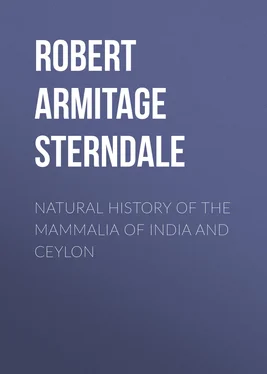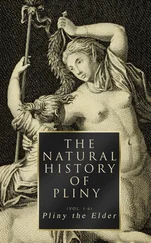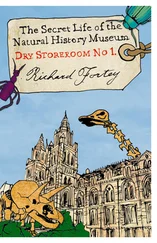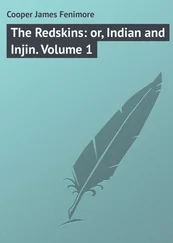Robert Armitage Sterndale - Natural History of the Mammalia of India and Ceylon
Здесь есть возможность читать онлайн «Robert Armitage Sterndale - Natural History of the Mammalia of India and Ceylon» — ознакомительный отрывок электронной книги совершенно бесплатно, а после прочтения отрывка купить полную версию. В некоторых случаях можно слушать аудио, скачать через торрент в формате fb2 и присутствует краткое содержание. Жанр: foreign_edu, Биология, на английском языке. Описание произведения, (предисловие) а так же отзывы посетителей доступны на портале библиотеки ЛибКат.
- Название:Natural History of the Mammalia of India and Ceylon
- Автор:
- Жанр:
- Год:неизвестен
- ISBN:нет данных
- Рейтинг книги:5 / 5. Голосов: 1
-
Избранное:Добавить в избранное
- Отзывы:
-
Ваша оценка:
- 100
- 1
- 2
- 3
- 4
- 5
Natural History of the Mammalia of India and Ceylon: краткое содержание, описание и аннотация
Предлагаем к чтению аннотацию, описание, краткое содержание или предисловие (зависит от того, что написал сам автор книги «Natural History of the Mammalia of India and Ceylon»). Если вы не нашли необходимую информацию о книге — напишите в комментариях, мы постараемся отыскать её.
Natural History of the Mammalia of India and Ceylon — читать онлайн ознакомительный отрывок
Ниже представлен текст книги, разбитый по страницам. Система сохранения места последней прочитанной страницы, позволяет с удобством читать онлайн бесплатно книгу «Natural History of the Mammalia of India and Ceylon», без необходимости каждый раз заново искать на чём Вы остановились. Поставьте закладку, и сможете в любой момент перейти на страницу, на которой закончили чтение.
Интервал:
Закладка:
Ears moderate, but joined above, as in the Megaderms; the nostrils at the end of the muzzle, with a little lamina above, forming a kind of snout; tail slender and joined at the base with the intercrural membrane, but extending far beyond it.
Dental formula: Inc., 2/4; can., 1—1/1—1; premolars, 1—1/2—2; molars 3—3/3—3.

HABITAT.—All over India, Burmah and Malayana.
DESCRIPTION.—Muzzle long, thick, truncated, and surrounded by a small leaf; tragus oblong, bi-acuminate; forehead concave with a channel down the centre; fur soft and very fine, dull brown throughout; face, rump, and part of abdominal region naked.— Jerdon .
SIZE.—Head and body, 2-6/10 inches; tail, 2½; expanse, 13.
Frequents old ruins, caves, and clefts in rocks.
Bats without facial membranes; with short obtuse and bull-doggish heads; large lips.
Have a small rounded indenture on the forehead; no raised lamina on the nostrils; the head pyramidal; eyes rather large; ears moderate in size and not joined at the base, but widely apart; the tip of the tail free above the membrane, which is much longer.
The males have a transverse cavity under the throat; wings long and narrow, collapsing with a double flexure outwards; fur soft and velvety. (Dobson includes this genus in his Family Emballonuridæ .)
Dental formula: Inc., 1—1/4; can., 1—1/1—1; premolars, 2—2/2—2; molars, 3—3/3—3; premaxillaries cartilaginous, supporting only one pair of weak incisors with a gap between them.
HABITAT.—India generally.
DESCRIPTION.—"Ears oval, with many distinct folds, naked except at the base; tragus securiform; fur thick, close, fuscous-black; or dark fuscous-brown above; beneath paler, except on the throat, the hairs being conspicuously tipped with grey, the upper hairs being all white at their base; face nude, and the membrane dark brownish-black" ( Jerdon ). The gular sac, though represented in the male, is almost absent in the female, being but a rudimentary fold of skin; in this it differs from another common Indian species, T. saccolaimus , in which the gular sac is well developed in both sexes, though larger in the male.
SIZE.—Length, 5 inches; expanse, 15 to 16; tail, 1; fore-arm, 2-5/8; tibia, 1 inch.
This bat frequents old buildings, dark cellars, old ruins, &c.; the young are fulvescent, and become darker with age. Blyth states that it has a surprising faculty for creeping about on the vertical board of a cage, hitching its claws into the minute pores of the wood.
HABITAT.—Common about Calcutta, East Coast of India, Burmah, and Cochin China.
DESCRIPTION.—"No gular sac, the openings of small pores appearing along a line corresponding to the position of the mouth of the gular sac in other species; in some male specimens the hair behind these pores is very long, forming a dense black beard" ( Dobson ). Ears moderate, oval, with the outer margin extending under the eyes, dilated into a large rounded lobe; the tragus leaf-shaped; the head, muzzle, and chin covered with short hairs.
SIZE.—Length of head and body about 3½; tail, 2/3; wing expanse, 14 inches.
Horsfield says it occurs in caves in Java inhabited by the esculent swallows ( Collocalia nidifica ), the gelatinous nests of which are used for soup by the Chinese. Dobson remarks that the black beard is not always developed in the males; he conceives it to be owing to certain conditions, probably connected with the amorous seasons. In five males in the Indian Museum the beard is well developed; he found that only two per cent. of the Cochin China specimens in the Paris Museum possessed it.
HABITAT.—Peninsula of India, Burmah, and Ceylon.
DESCRIPTION.—"Muzzle angular, naked, very acute; nostrils small, close; ears distant, shorter than the head, large inner margin recurved, outer margin dilated, reaching to the commissure of the mouth; tragus wide, securiform (i.e. axe-shaped); fur short, smooth, blackish on the head, chestnut brown on the back; beneath, dirty-white or black brown above with white pencillings; pure white below" ( Jerdon ). Dobson says of the fur: "above, white at the base, the terminal three-fourths of the hairs black, with a few irregular small white patches on the back; beneath dark brown." The gular sac is to be found in both sexes, but somewhat larger in the males.
SIZE.—About 5 inches; wing expanse, 17.
HABITAT.—Tenasserim.
DESCRIPTION.—The gular sac is absent in both sexes; ears larger than in any others of the sub-genus; the muzzle, from the corners of the eyes downwards, naked.
SIZE.—Head and body about 3-1/10 inches; tail, 1¼.
HABITAT.—Kachh, N. W. India.
DESCRIPTION ( apud Dobson).—"Gular sac absent in both male and female; its usual position indicated in the male by a semi-circular fold of skin and nakedness of the integument in this situation; in other respects similar to T. nudiventris . The deposits of fat about the tail very large."
SIZE.—Head and body about 3 inches; tail, 1¼.
T. nudiventris , above alluded to, is an inhabitant of Asia Minor, Egypt, and Nubia; similar to the above, only that it has a small gular sac in the male, of which a trace only exists in the female. Its most striking peculiarity is the deposit of fat at the root of the tail, which may possibly be for purposes of absorption during the dormant winter season.
"Ears broad, short, approximate or connate with the outer margin, terminating in an erect lobe beyond the conch; tragus small, concealed" (often very small and quadrate, but never reduced to a mere point, as in Molossus —Dobson); "wings narrow, folded as in Taphozous ; intercrural membrane short, truncate; tall free at the tip; feet short, with strong toes; muzzle thick; lips tumid, lax; upper lip with coarse wrinkles."— Jerdon .
Dental formula: Inc., 2/6 or 2/4; can., 1—1/1—1; premol., 2—2/2—2; mol., 3—3/3—3.
HABITAT.—India generally.
DESCRIPTION.—Muzzle broad and thick; upper lip overhanging the lower, marked by vertical wrinkles; ears large and quadrilateral; outer margin ending in a decided anti-tragus; tail thick; the lower part of the leg is free from the wing membrane, which however, is connected with the ankle by a strong fibrous band; fur dense, smoky or snuff brown above (or bluish black— Dobson ); paler beneath.
SIZE.—Head and body about 2-1/10 inches; tail, 1-1/10. Jerdon gives length, 4¼ to 4-1/10; expanse, 13½; tail, 1¾.
This bat is common about Calcutta, frequenting ruins, dark places and hollow trees. It is allied to N. tenuis ( Horsfield ), and it is mentioned as inhabiting hollow trees in such numbers as to attract attention by the hissing noise from within, every available spot in the interior being occupied. A synonym of the genus is Dysopes .
Читать дальшеИнтервал:
Закладка:
Похожие книги на «Natural History of the Mammalia of India and Ceylon»
Представляем Вашему вниманию похожие книги на «Natural History of the Mammalia of India and Ceylon» списком для выбора. Мы отобрали схожую по названию и смыслу литературу в надежде предоставить читателям больше вариантов отыскать новые, интересные, ещё непрочитанные произведения.
Обсуждение, отзывы о книге «Natural History of the Mammalia of India and Ceylon» и просто собственные мнения читателей. Оставьте ваши комментарии, напишите, что Вы думаете о произведении, его смысле или главных героях. Укажите что конкретно понравилось, а что нет, и почему Вы так считаете.












